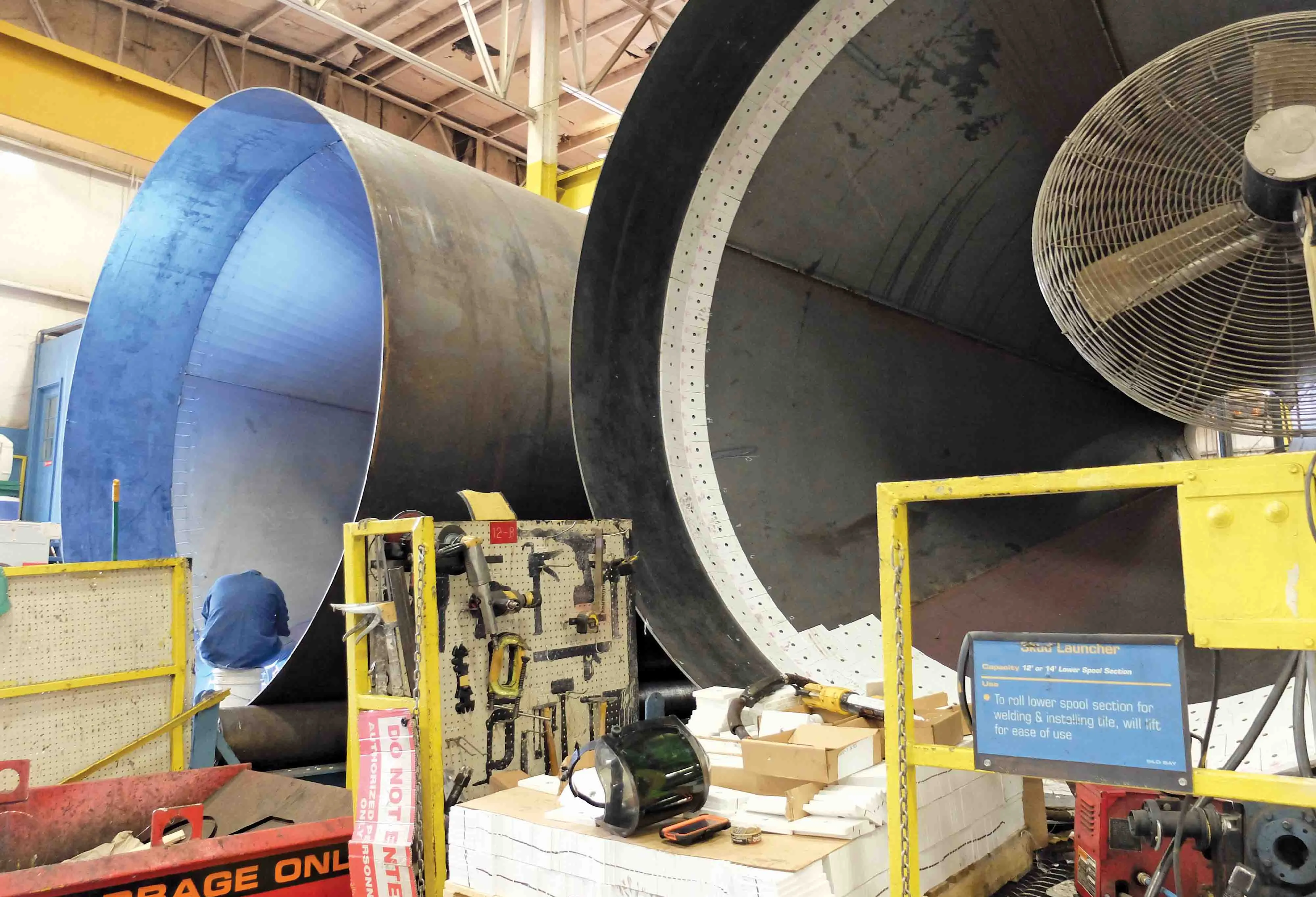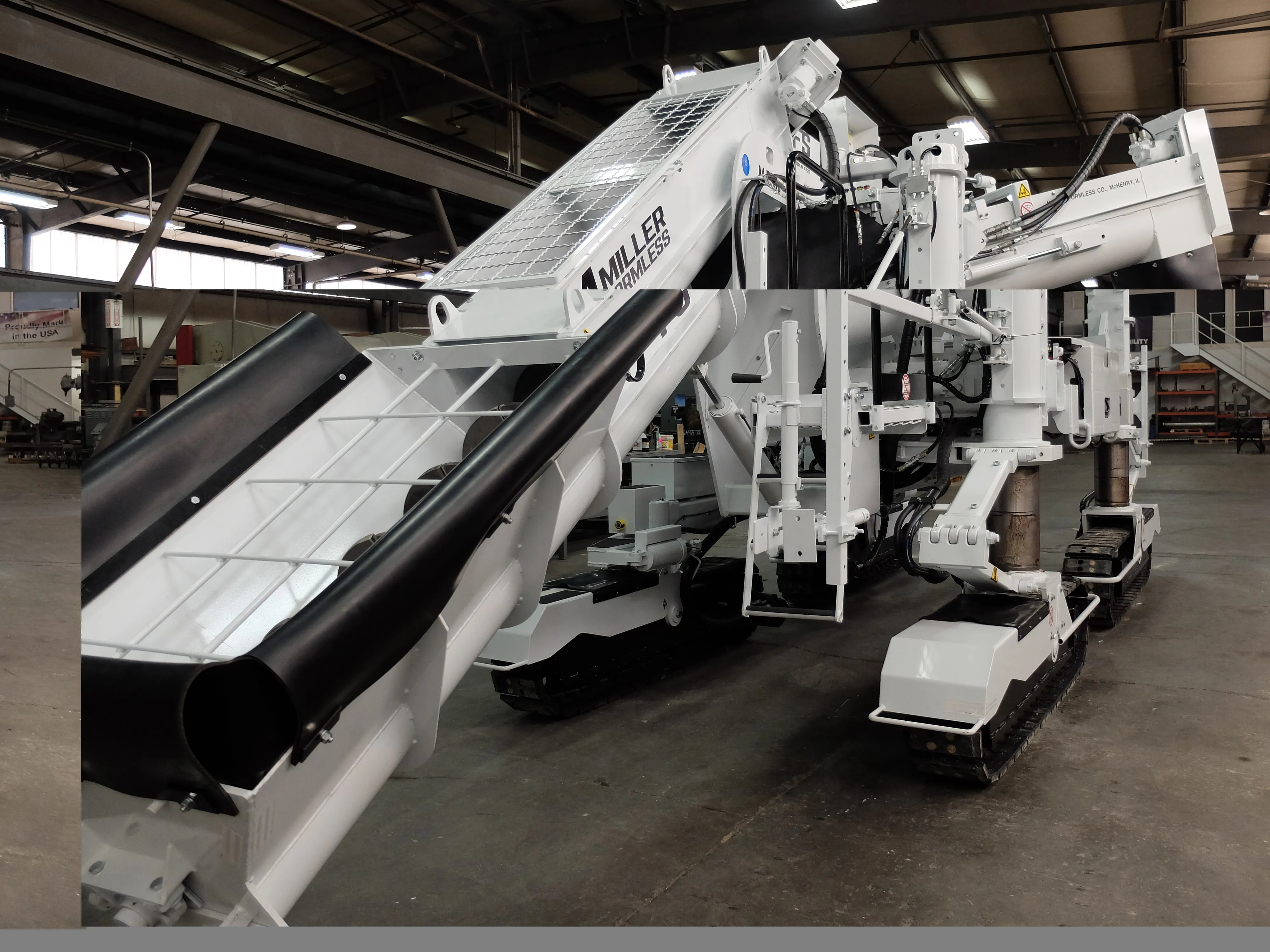
This month’s bitumen technology pages bring you self-healing roads, slippery roads and slimmer roads and explains why one UK contractor has started manufacturing its own polymer modified bitumen - Kristina Smith reports
Professor Erik Schlangen, who heads up experimental micromechanics at the
The idea is simple. Tiny lengths of steel fibre are mixed in with the asphalt of a road’s wearing course; every few years, an induction machine is driven over the road, creating eddy currents in the wires which then heat up; the heat from the wires melts the bitumen around them which then runs in to fill up any tiny cracks that have formed.
The Dutch government believes the savings could be massive. It has calculated that if this material was laid on every highway in the Netherlands, the savings over the whole life of the roads would equate to €90 million/year. The fibres – which are like wire wool, 25 microns in diameter and 8 to 10mm long – add only 25% to the capital cost of the wearing course.
Schlangen’s team began working on the idea back in 2007, with the first trial section on the Netherland’s A58 laid in 2010. That section was treated with the induction machine in 2014 and tests prove that it is still in good condition. The next pass is planned for 2018.
“You have to treat it when there are only micro-cracks, before you see cracks or potholes and before the stones are driven out of the surface,” explained Schlangen. “We did testing in the laboratory to age samples in different conditions and from that research we found out that four years was the optimum time interval. We may have to increase that frequency in the future as the bitumen is still ageing so it may be damaged faster in the future.”
Porous asphalt is used in the Netherlands because it takes water away from the road surface and also because it absorbs sound. However, the open structure means that it is more vulnerable to damage with porous asphalt wearing courses having a standard life of around eight or nine years.
The self-healing asphalt has been laid on 11 other roads by contractor
There were some practical issues to solve in manufacturing the mix. The fibres, though small, were all wrapped in a big ball when they were delivered so a means of separating them had to be devised; Schlangen does not want to reveal this technical detail.
In a few years’ time, the first trial section will provide proof that the self-healing wearing courses do last longer than their standard counterparts since most have to be renewed after eight or nine years. Meanwhile, interested parties from Europe, North and South America and Asia have all been on the phone.
Taking the idea further, one of Schlangen’s PhD students has been testing an alternative self-heal technology on a trial section in China, which sees tiny capsules containing rejuvenator mixed into the road. A variety of capsule materials are under trial, containing a light oil such as waste cooking oil.
One of the challenges is that the oil tends to migrate very slowly through the hardened bitumen, a process that is speeded up with heat. So perhaps the best solution could be a combination of both the capsules and the induction-heated fibres, said Schlangen.
PR Industrie
While most surfacing materials aim to provide adhesion,
The specialist additive manufacturer invented PR SLIDE, a two-part epoxy resin system, for the APTH training centre in Le Creusot, France and commercialised it 15 years ago. Since that time, the surfacing material has been re-laid many times on the centre’s four tracks, with contractor
Set up initially over 20 years ago by the hydrocarbon transport accident prevention association (APTH), the centre in Le Creusot now offers training to a broader range of drivers including those who drive HGVs, LGVs and cars. In addition to 4km of tracks, the facility offers driving workshops, practice loading stations, a firefighting workshop and meeting rooms.
The slipperiness of the track allows accident situations to be created at around half the speed that they would normally occur, providing the driver with the sensation of losing control without the danger of doing it at high speed. The tracks are equipped with water obstacles that squirt out water in front of the driver, simulating an event such as a pedestrian stepping in front of the vehicle or a car stopping.
The idea of the training sessions is to discourage drivers from driving too fast. “The aim is to show drivers what can happen if they drive at the limit,” explained PR Industrie’s business development manager Michael Lecomte. “According to the centre manager, a visit to the track leads to an accident rate that is halved because people realise how dangerous it can be.”
Iterchimica
A total rethink of the design of a 9km-long section of the A53 in Italy has led to a more durable pavement structure, while requiring significantly less materials and slashing the number of days spent laying pavements layers by 130 days.
The scope of works on the A53 between Pavia and Berguado encompassed several things: upgrades to guard rails to meet current safety standards; the widening of the road to accommodate the new barriers at either side and centrally; new lighting; a new wastewater system; and a new tollgate at Berguado.
Concession-holder Milano Serravalle-Milabo Tangenziali worked with Professor Maurizio Crispino of Politecnico di Milano and specialist additive supplier Iterchimica to challenge and update the design of the pavement. The result is a road construction that is 90mm less deep than the original design, has reused and rejuvenated material taken from the original road, and that exhibits better performance characteristics.
“We like to get involved at an early stage because it means we can understand our customer’s needs better and propose a range of solutions,” said Iterchimica’s chief executive Federica Giannattasio. “Our customer gets a more efficient approach and can leverage our extensive knowledge and consultancy value.”
The original design comprised a 200mm of stabilised layer, a 200mm cement-bound layer, a 150mm HMA base layer, 60mm of HMA binder and a 50mm wearing course. The new solution comprises 300mm of super-compacted subgrade; a 300mm cement-bound layer mixed in-situ with Iterchimica’s ITER PPS 1000CS, polypropylene fibres and polymetric compound, 30% of RAP and anti-stripping agent ITERLENE ACF1000S/115; an 80mm high-modulus base binder layer, also with 30% RAP and the Iterchimica additives; and finally a 90mm high-modulus semi-draining bituminous wearing course with 20% RAP and the additives.
Fatigue tests showed that that the new mix performed better than the original one which should mean that the road lasts longer. In terms of environmental benefits, the new design meant that contractor Itinera-Caffù JV saved 4,000 lorry journeys equating to 72,000litres of diesel. Around 18,000m3 of bituminous materials were saved together with 40,000m3 of stabilised and cement-bound mix.
FM Conway
In an unusual move, UK contractor FM
“One of the things we are very keen on is collecting lots of data,” said FM Conway’s director of development David Smith. “We are investing around £1 million to provide a new laboratory at our Gravesend facility where we can do our own sophisticated testing.”
FM Conway is using SBS polymers from Kraton to create its PMB. “We’ve had technical input from Kraton and we have also been working with the supplier of the PMB plant, Benninghoven,” said Smith.
There is a growing awareness among clients such as national roads authority Highways England and Transport for London that PMB can increase the life of roads. “When you get to some of the other local authorities, the impact of budget reductions means that they don’t have any in-house materials engineer expertise. That means you end up with a client who is inexperienced and de facto becomes risk-averse.”
Currently PMBs are used mostly in the surfacing layers of roads in the UK. However, FM Conway is keen to investigate its use in lower layers and is working on a research project with Nottingham University and the University of New Hampshire in the US to investigate the impact of PMBs on durability of roads.
FM Conway has an ethos of self-delivery. Starting out as a contractor, the firm now has a design business, five asphalt plants including two with parallel heating drums for recycled asphalt and a plant fleet which includes two bitumen tankers with a third under order. In 2014, it started up its own bitumen storage terminal at Gravesend, South East England, with a capacity of 7,500tonnes.
“We believe we are the only asphalt manufacturer in the UK that has its own bitumen import terminal,” said Smith. “The reason we did it was because we wanted independence, and long-term security of supply. There’s a decline in European refineries and that will continue.
Refineries are being upgraded to produce higher-value products than bitumen and older refineries that would cost too much to upgrade are being shut down. Because FM Conway works only in London and the South East, this one terminal can service all its asphalt plants.
FM Conway currently has a long-term supply contract with Shell Bitumen. “We still like to have our bitumen coming from Europe where possible because the short sea journey makes it easier to control our stocks,” said Smith. FM Conway also supplies bitumen to Nynas which services its customers in the South from the Gravesend terminal.









